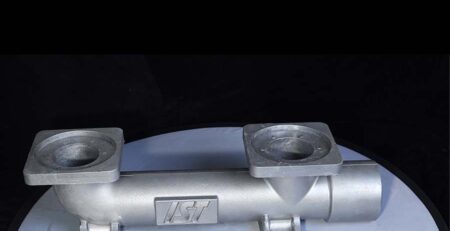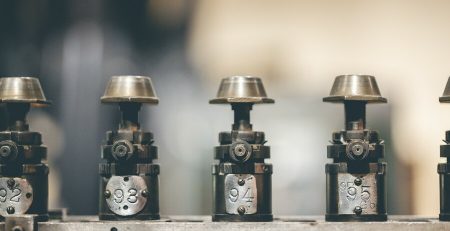Aluminum die casting flame proof equipment
Understanding Flame-Proof Equipment
Flame-proof equipment is specifically designed to operate in hazardous environments where flammable gases, vapors, or dust are present. These devices are constructed to prevent internal explosions from igniting the external environment. Industries such as oil and gas, mining, chemical plants, and pharmaceuticals heavily rely on flame-proof equipment to ensure worker safety and operational integrity.
Key characteristics of flame-proof equipment include:
- Strength: Resistance to high pressure and heat.
- Sealing: Prevention of gas leakage from internal components.
- Durability: Withstanding harsh environmental conditions.
Why Aluminum for Flame-Proof Equipment?
Aluminum is widely regarded as an ideal material for manufacturing flame-proof equipment due to its unique properties:
- Lightweight: Aluminum’s low density ensures that even large components remain manageable and easy to install.
- Corrosion Resistance: High resistance to rust and chemical degradation extends the lifespan of flame-proof equipment in harsh conditions.
- Thermal Conductivity: Aluminum efficiently dissipates heat, preventing overheating in explosive environments.
- Strength-to-Weight Ratio: The material offers excellent durability without unnecessary bulk.
- Recyclability: Aluminum is eco-friendly and cost-effective, as it can be recycled without losing its inherent properties.
Aluminum Die Casting: The Manufacturing Process
Die casting is a manufacturing technique where molten metal is injected into a steel mold under high pressure. The process produces precise, complex, and high-quality components that require minimal post-processing. Here’s a step-by-step overview of the aluminum die casting process for flame-proof equipment:
- Mold Creation: A steel mold is designed to fit the required specifications of the flame-proof component. This mold is crucial for ensuring uniformity and accuracy.
- Melting Aluminum: Aluminum is melted to a temperature of approximately 660°C (1220°F).
- Injection: The molten aluminum is injected into the mold cavity under high pressure, ensuring every detail is replicated.
- Cooling: The mold is cooled to allow the aluminum to solidify, forming a rigid structure.
- Ejection: The finished part is removed from the mold.
- Finishing: Post-processing steps such as deburring, polishing, and coating ensure the part meets safety and aesthetic standards.
Benefits of Aluminum Die Casting in Flame-Proof Equipment
- Precision and Complexity: Die casting produces highly detailed components that adhere to stringent safety standards.
- Mass Production: High-pressure die casting allows for the production of thousands of identical parts with consistent quality.
- Cost-Effectiveness: Reduced material waste and efficient production cycles make die casting an economical choice.
- Customizability: Molds can be adapted to create unique designs tailored to specific industries.
- Consistency: Uniformity in parts ensures seamless integration into larger systems.
Industries Benefiting from Aluminum Die Casting in Flame-Proof Equipment
- Oil and Gas:
- Equipment: Junction boxes, control panels, and light fittings.
- Requirement: Components that can withstand corrosive environments and high temperatures.
- Chemical Plants:
- Equipment: Enclosures for electrical and mechanical systems.
- Requirement: Resistance to acidic or alkaline substances and reliability in volatile conditions.
- Mining:
- Equipment: Explosion-proof motor housings and switches.
- Requirement: Robust construction to handle extreme physical stress.
- Pharmaceuticals:
- Equipment: Secure, non-reactive enclosures for cleanroom environments.
- Requirement: Precision engineering to meet strict hygiene and safety standards.
Aluminum vs. Other Materials in Flame-Proof Equipment
| Feature | Aluminum | Steel | Plastic/Polymer |
|---|---|---|---|
| Weight | Lightweight | Heavy | Light |
| Durability | High | Very High | Moderate |
| Thermal Conductivity | Excellent | Moderate | Low |
| Corrosion Resistance | High | Moderate | Low |
| Cost | Moderate | High | Low |
Aluminum strikes the perfect balance between weight, durability, and thermal properties, making it the superior choice for flame-proof applications.
Challenges in Aluminum Die Casting for Flame-Proof Equipment
While aluminum die casting offers numerous advantages, it is not without challenges:
- High Initial Cost: Creating molds requires significant upfront investment.
- Porosity Issues: Gaps or air pockets can weaken the final product if the process isn’t carefully controlled.
- Complexity in Design: Ensuring intricate features are accurately cast demands expertise in mold design.
- Temperature Limitations: While aluminum is heat-resistant, it may not perform well in extreme high-temperature conditions compared to specialized alloys.
Solutions like advanced mold technology and improved casting methods are continually addressing these challenges.
Innovations in Aluminum Die Casting for Flame-Proof Equipment
Technological advancements have further enhanced the utility of aluminum die casting:
- 3D-Printed Molds: Faster prototyping and cost-effective production.
- Automated Casting Systems: Improved consistency and reduced human error.
- Alloy Development: Enhanced thermal and mechanical properties of aluminum alloys.
- Surface Treatments: Anodizing and powder coating for additional corrosion resistance.
Sustainability and Aluminum Die Casting
In an era focused on sustainability, aluminum die casting plays a vital role in eco-friendly manufacturing. Recycling aluminum requires only 5% of the energy needed to produce primary aluminum, making it a green choice for flame-proof equipment manufacturers.
Conclusion
Aluminum die casting has become indispensable in the production of flame-proof equipment. Its lightweight nature, durability, and cost-effectiveness, combined with precision manufacturing techniques, make it the material of choice for industries operating in hazardous environments. Despite challenges, advancements in technology continue to expand its potential. Manufacturers relying on aluminum die casting ensure safety, performance, and sustainability, meeting the stringent demands of modern industrial applications.
Tip: Regularly inspect your flame-proof equipment for wear and tear to ensure its effectiveness in hazardous environments.
Do you have additional questions or specific areas you’d like to explore? Here are some suggestions to deepen your understanding:
- What are the common defects in aluminum die casting and how to prevent them?
- How does aluminum die casting compare to sand casting?
- What standards govern the manufacturing of flame-proof equipment?
- Can you explain the role of CNC machining in post-processing die-cast parts?
- What are some examples of innovative flame-proof products?
- How does anodizing improve aluminum for flame-proof applications?
- What testing methods are used to ensure flame-proof equipment safety?







Leave a Reply